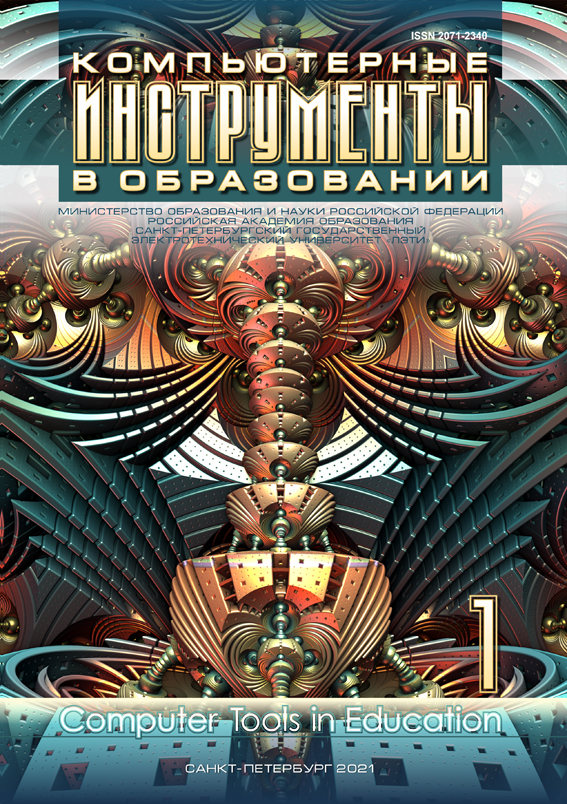Ontology of Discrete Mathematics in Education
Abstract
Currently, ontologies are widely used in computer science for the formalized representati- on of knowledge about various subject areas. Special formal languages for describing ontologies have been developed and are successfully used, which allow describing ontologi- es in a form that is accessible for use by both humans and computers.Among the various options for using ontologies, a special place is occupied by the use of ontologies in educati- on, since the systematization and ordering of knowledge, being the main competitive advantage of the ontological approach, is at the same time one of the main goals of the educational process. The article proposes original methods of constructing ontologies for use in the educational process of higher education. The central idea is the construction of faceted, in other words, multifaceted ontologies, in which different aspects of the same subject area are described by conceptually similar, but syntactically different means. This approach provides a more accurate and semantically adequate description while maintaining the known brevity and clarity of designations. As a language for describing ontologies, it is proposed to use the unified modeling language UML 2, which has proven itself in formalization in many cases. The presentation is based on the example of constructing an ontology of discrete mathematics, and the ontology diagrams given in the article are introduced into the educational processes of the Academic and Polytechnic Universities of St. Petersburg.
References
T. Hofweber, “Logic and Ontology,” E. N. Zalta ed., in The Stanford Encyclopedia of Philosophy, Sum. 2020. [Online]. Available: https://plato.stanford.edu/archives/sum2020/entries/logic-ontology/
T. R. Gruber, “The role of common ontology in achieving sharable, reusable knowledge bases,” in Proc. of the Second International Conference Principles of Knowledge Representation and Reasoning, vol. 91, 1991, pp. 601–602.
V. A. Lapshin, “Ontologii v informatsionnykh sistemakh” [Ontologies in information systems], Moscow: Nauchnyi mir, 2010.[Online] (in Russian). Available: http://isdwiki.rsuh.ru/moodle/pluginfile.php/128/ course/section/36/bookLapshin.pdf
“Metody inzhenerii znanii” [Knowledge Engineering Techniques], in Upravlenie znaniyami. [Online] (in Russian). Available: https://sites.google.com/site/upravlenieznaniami/inzeneria-znanij/ sredstva-inzenerii-znanij
National Center for Biotechnology Information, “The Taxonomy Database,” in www.ncbi.nlm.nih.gov. [Online]. Available: https://www.ncbi.nlm.nih.gov/taxonomy/
S. Decker et al., “The semantic web: The roles of XML and RDF,” IEEE Internet computing, vol. 4, no. 5, pp. 63–73, 2000. doi: 10.1109/4236.877487
B. McBride, The resource description framework (RDF) and its vocabulary description language RDFS, Berlin, Heidelberg: Springer, pp. 51–65, 2004.
D. L. McGuinness et al., “OWL web ontology language overview, W3C recommendation,” in W3C, 10 feb. 2004. [Online]. Available: https://www.w3.org/TR/2004/REC-owl-features-20040210
S. Cranefield and M. K. Purvis, UML as an ontology modeling language, Dunedin, New Zealand: Uneversity of Otago, 1999.
F. A. Novikov, Discrete Mathematics: A Textbook for High Schools, St. Petersburg: Piter, 2017 (in Russian).
F. A. Novikov, “Discrete mathematics for programmers,” in Professional’naya razrabotka programm- nykh sistem. [Online] (in Russian). Available: http://uml3.ru/index.html
I. Schinz et al., “The Rhapsody UML verification environment,” in Proc. of the Second International Conference on Software Engineering and Formal Methods, SEFM, 2004 – IEEE, 2004. pp. 174–183.

This work is licensed under a Creative Commons Attribution 4.0 International License.







